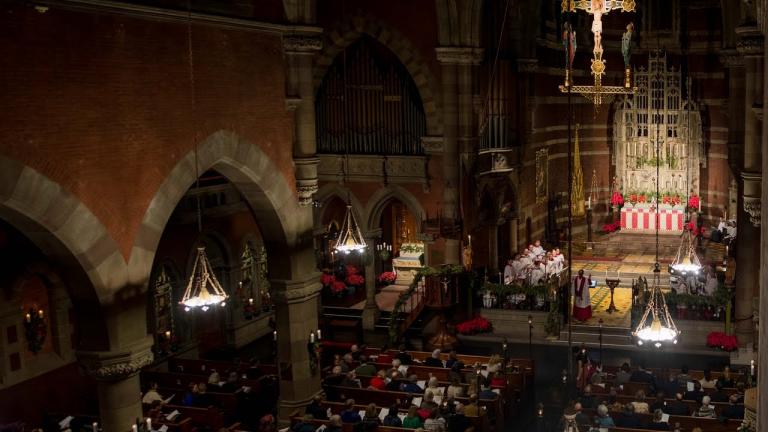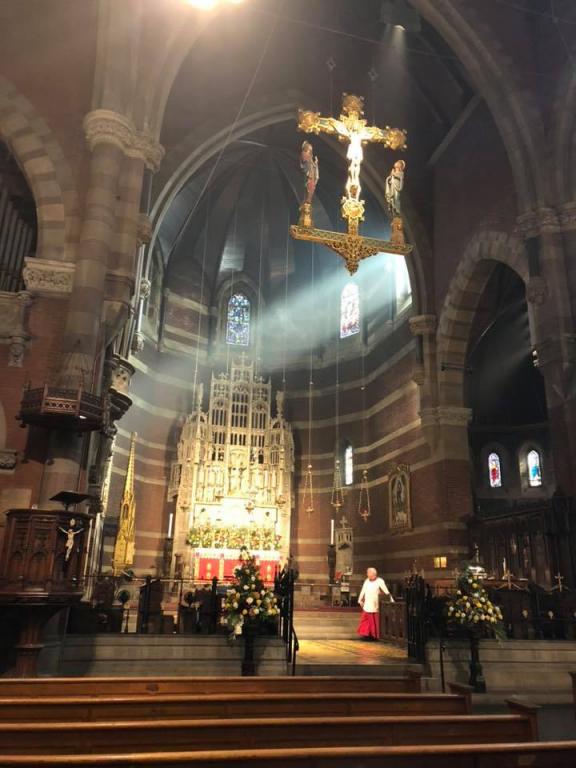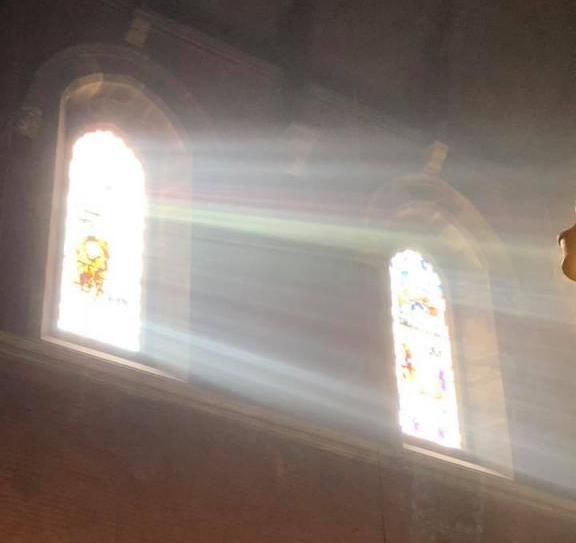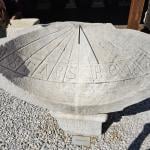As a professional Christian, I don’t get many Sundays off. In fact, I tend to take fewer off than I am allowed, since I enjoy my work immensely and am not traveling much these days. But a couple weeks ago I was in Boston on a Sunday morning, and following the recommendation of a few friends, found my way to The Church of the Advent, an Episcopal parish serving Boston’s Beacon Hill neighborhood since 1844.
Google maps directed me from the T, but once I was within about eight blocks I put my phone away and followed the smell of incense wafting through the brisk New England autumn air.
Worship at Advent differs from common liturgical practice in the contemporary American church, to say the least. It is exceedingly beautiful, sublime even, evoking a sense of transcendence that seems strikingly out of place, even in one of the most historic cities in the country. Continuity and communion with the universal church is palpable. From their website:
The Church of the Advent was born in 1844 from the inspiration of a group of Bostonians who desired to establish a new parish that would put into practice the ideals of the then-11-year-old Oxford Movement, which was attracting attention, converts, and controversy in England. The Oxford Movement called upon the Church of England to return to its historic roots in the undivided Catholic Church, including a restoration of liturgical practices which had fallen so far out of use that Anglican worship at the time looked little different from that of a Congregationalist church.
One of the things I find most disturbing about contemporary Christian worship is that we go about it like the Divine is completely familiar and pedestrian. And in many cases, this is by design. The leaders of the seeker movement have been screaming for years that worship should be a come-as-you-are jam session built around the pop preferences and entertainment appetites of the surrounding community. I even have a colleague here on Patheos Evangelical who explicitly states that church should be a fun time for the whole family. The buildings look more like modern movie theaters, the faux-liturgy an extemporaneous and ad hoc list of assurances that God can fit nicely into your life, and the overarching sensibility one of customer service.
Because that’s what most mega-churches and mega-church Mini-Mes are, frankly. Corporations achieving varying levels of success by peddling fun experiences that are more entertaining than any others within commuting distance. Worship is the ultimate fun experience at these places, the musicians and speakers the headliners in a quasi-holy bait-and-switch scheme that secures your butts in their padded, stadium-style seats by promising you the best Jesus that money can buy.
But that’s simply not worship.
On Advent’s website is their Liturgical Customary, a long document describing the movements in the historical drama that are played out in their rich liturgical worship. Some of you may not agree with every practice of Anglo-Catholic worship and that’s certainly your own prerogative. But after reading through entry after entry on liturgical posture, and possibly pausing just long enough to practice my own genuflecting in the mirror, I was bowled over by a concluding paragraph.
While the foregoing may seem excessively fussy, particularly in an age when manners are out of fashion and seminaries are apparently intent on turning the Mass into a rock-‘n’-roll show, remember that Divine Service is not a casual activity. The Lord’s Supper is a heavenly banquet, not a drive-thru lunch from a fast food shop. Lack of attention to deportment at Mass is as inappropriate as wearing torn jeans to a formal dinner. Sloppiness of appearance, movement or behavior will not show forth “the beauty of holiness and the holiness of beauty,” which is what we seek to present. (1)
After countless readings and re-readings of this paragraph, all with bated breath, I finally exhaled deeply with a series of questions.
Why aren’t we all approaching worship with reverence, seriousness, and sobriety?
Why are we trying to make worship accessible to those who don’t care about it anyway?
What’s wrong with us that we think we should get to have worship made in our own image?
Why are we so offended by the beauty of holiness?
I’m not advocating a lengthy list of prescriptions, only that we begin to look in the mirror and see what we’ve become. I think it’s clear that church worship cannot look like a rock concert and retain the beauty of holiness. But more subtly, the psycho-therapeutic architecture of most American Protestant and Evangelical worship cannot reflect it either, because God alone is perfect and holy. Whenever we learn to admit this, we might begin to recover hints of the “otherness” in worship, in which the rule of prayer, not the rule of pop culture, is allowed to govern our worship, and therefore our collective belief.
Ultimately, I have no answers for these questions other than our god is too familiar and our “worship design” alarmingly narcissistic. I fear we aren’t just guilty of domesticating the one true God, itself a grave error. In our petulant insistence on me-worship, we have shown where our ultimate allegiance lies and crowned ourselves lord of all. More terrifying still is my suspicion that most of the church doesn’t even recognize what the hell we’ve done.
Forgive us, we pray.
Photos:
1. Youtube screenshot
2. Personal photo
3. Personal photo
1. William J. Theisen and Julianne E. Turé, Liturgical Customary of the Church of the Advent, “A Primer on Liturgical Ettiquette”



















